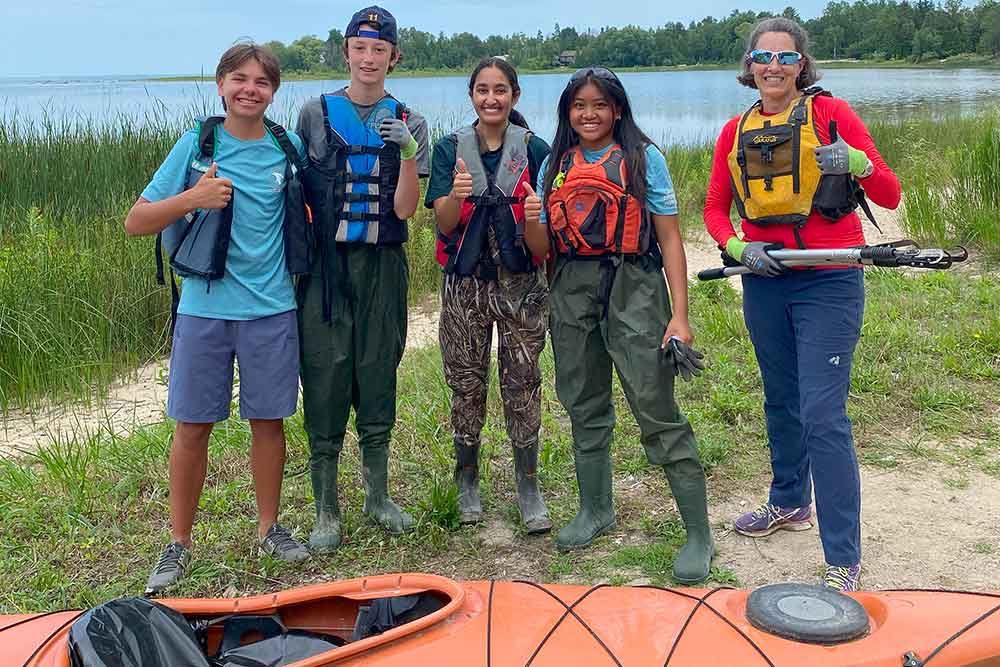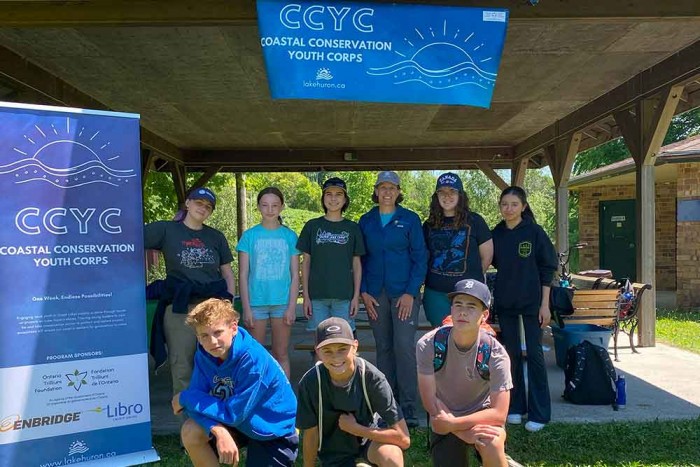Youth Corps helps Lake Huron

Youth make positive difference for Lake Huron through Lake Huron Coastal Centre’s Coastal Conservation Youth Corps
SUBMITTED BY LAKE HURON COASTAL CENTRE
The Lake Huron Coastal Centre’s Coastal Conservation Youth Corps (CCYC) program wrapped up two fantastic weeks of hands-on environmental work along Saugeen Shores and Kincardine in July of 2024.
The program was packed with enthusiastic participants who were ready to make a difference, and they certainly did, according to the Coastal Centre.
The first week of activity, in the Town of Saugeen Shores, for the Coastal Conservation Youth Corps, was a whirlwind of activities.
The young people kicked things off at Eidt’s Grove, where they tackled the invasive Scots Pine.
The Town of Saugeen Shores provided support as the youths removed larger trees.
Next, the CCYC turned its attention to the dunes at Eidt’s Grove, removing the invasive Blue Lyme Grass.
Protecting these established and diverse sand dunes is crucial as they play a vital role in painting the health of beautiful beach ecosystems along Lake Huron, according to the Coastal Centre.
Restoration efforts continued at Gobles Grove, where the Youth Corps members planted various native species and worked to build the dune.
Sand dunes are essential, the Coastal Centre says, as they act as natural barriers, preventing sand from blowing onto roads and they make sure Lake Huron's beaches are sandy and pristine.
The CCYC work finished with a bike ride to Horseshoe Bay, where some participants suited up in hip waders and lifejackets to remove the invasive reed, called Phragmites, both from in the water and the shoreline.
In Kincardine, the work of the CCYC was focused on one restoration site at Station Beach. An eroding old pathway needed the help of these hard-working young people, so they transplanted American Beach Grass from established dunes to their site and planted more vegetation at the top of the dune to prevent further erosion.
The Youth Corps members visited Kincardine Fish Hatchery to learn about the work of local volunteers who raise and release Brown and Rainbow Trout to help sustain the fish population.
The CCYC trip to Goderich was equally impactful as these young Lake Huron stewards worked on the dunes, removing invasive Sweet White Clover and planting Little Bluestem.
On the bluff at Sunset Park, the Youth Corps volunteers pulled more invasive plants and planted deep-rooting grasses and low growing shrubs to protect the slope from erosion.
The week finished with a beach cleanup where the CCYC made the disappointing discovery of nurdles. Nurdles are small plastic pellets the size of a lentil which are melted down and used to make our bigger plastic items like plastic bottles, toys, and grocery bags. Spillage while shipping can cause them to float onto our shorelines. It takes around 600 nurdles to make one small plastic disposable water bottle. We counted how many we could find in a minute, with one speedy picker collecting a record of 28 nurdles.
Although it was disappointing to find these plastic contaminants along Lake Huron, it was rewarding for the Youth Corps to collect and remove some of these plastic pollutants, knowing they were making a positive difference.
The CCYC program accomplished so much in two weeks, thanks to the hard work and dedication of participants and supporters.
Every action contributed to preserving the beauty and health of the coastal environment along Lake Huron’s southeast shore.
The Lake Huron Coastal Centre (LHCC) extends its heartfelt thanks to everyone who supported LHCC and the Coastal Conservation Youth Corps, making it possible to continue running the incredible program for the fifth year.
“Here’s to many more weeks of passion, learning and environmental stewardship with CCYC,” said Sielo Naranjo-Vargas, Environmental Technician with the Lake Huron Coastal Centre.

